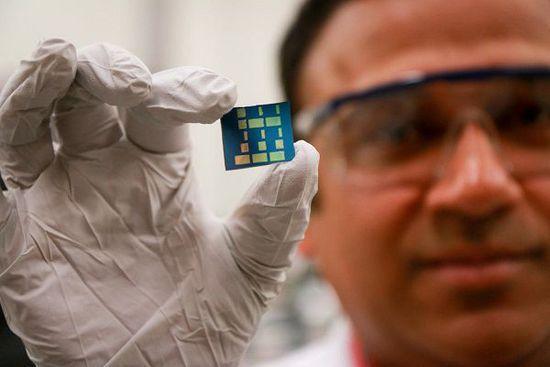
On the grand stage of the global semiconductor industry, India harbors the lofty ambition of becoming a semiconductor powerhouse and is strenuously advancing. The support from the United States and Taiwan region is like injecting a powerful impetus into India's semiconductor dream, enabling it to see more glimmers of hope on the road to achieving its goal.
The support of the United States for India's semiconductor industry stems from various strategic considerations and practical measures. Firstly, in order to build a more stable ally system in the global semiconductor supply chain and reduce excessive dependence on specific regions. India, a country with a huge population base and vast market potential, naturally becomes the focus of the United States. US chip giant Qualcomm announced an investment of 20 million US dollars in Chennai, India, to expand its design center and focus on the research and development of wireless connection solutions and Wi-Fi-related innovative technologies. This move has brought about 1,600 professional positions to India. In addition, semiconductor companies in the United States such as Applied Materials, Micron, and AMD have also increased their investment in India one after another, greatly promoting the development of India's semiconductor industry.
The US government also provides strong support to India at the policy level. The United States and India signed a memorandum of understanding on semiconductor cooperation, aiming to create a semiconductor supply chain and innovation partnership. This series of actions undoubtedly provides a solid guarantee for the development of India's semiconductor industry and also makes India's position in the global semiconductor industry gradually rise.
Taiwan region plays a unique role in the development process of India's semiconductor industry. In order to cooperate with the US "chip containment against China" strategy, the Taiwan authorities, on the one hand, build technological barriers against the Chinese mainland and restrict the transfer of Taiwan's chip technology to the Chinese mainland; on the other hand, they actively help India develop semiconductor technology. Liu Mengqi, deputy head of Taiwan region's education affairs department, once led the supervisors of 11 universities in Taiwan region to India to jointly discuss the cultivation of high-end chip talents. This cooperation in talent cultivation is crucial to India's semiconductor industry and can provide urgently needed professional and technical talents to boost India's technological research and development and industrial upgrading in the semiconductor field.
With the support of the United States and Taiwan region, India itself is also making unremitting efforts to actively promote the forward development of the semiconductor industry. As early as the end of 2021, the Indian government approved a chip incentive plan worth 10 billion US dollars to attract overseas chip manufacturers to settle in India for chip manufacturing through various subsidies. Indian Prime Minister Modi even regards chip manufacturing as the key to India's economic development and spares no effort to promote the development of the semiconductor industry. For example, the large 12-inch wafer factory jointly built by Powerchip Technology Corporation from Taiwan region of China and India's Tata Group has started construction in India. The goal is to achieve mass production of 28-nanometer semiconductor chips by the end of 2026. This is India's first commercial semiconductor factory and has significant milestone significance.
Despite the support from the United States and Taiwan region, the development of India's semiconductor industry still faces many severe challenges. First, India's infrastructure construction is relatively weak, and problems such as unstable water and electricity supply are great constraints for an industry like the semiconductor industry that has extremely high requirements for power supply. Second, there is still a large gap between India and the international advanced level in the technical level of semiconductor manufacturing, and it lacks core technologies and independent research and development capabilities. Although India has a large number of chip design talents, it still highly depends on foreign technologies and equipment in terms of chip manufacturing processes and equipment. Moreover, India's business environment also needs to be optimized. Problems such as the implementation and execution efficiency of government policies and land approval may affect the investment and development of foreign-funded enterprises in India.
Although there are many challenges, India's semiconductor dream is not out of reach. With the continuous strengthening of support from the United States and Taiwan region and India's own continuous efforts, India's semiconductor industry has made certain progress. It is predicted that by 2026, the value of India's semiconductor market will reach 63 billion US dollars. By 2030, this figure is expected to exceed the 100 billion US dollar mark and create more than 600,000 jobs. If India can successfully overcome the existing challenges and continuously improve its own technical level and industrial competitiveness, then it is not impossible to occupy an important position in the global semiconductor industry.
With the assistance of the United States and Taiwan region, India's semiconductor dream is gradually advancing on the journey forward. However, to truly become a semiconductor powerhouse, India still has a long way to go and needs to continue to make efforts in infrastructure construction, technological research and development, business environment and other aspects. Only in this way can India's semiconductor industry usher in a more brilliant future.

A new survey released in the United States shows that in the context of rising prices and growing concerns among the public about the economic outlook of the country, there is a coexistence of frugality and differentiation.
A new survey released in the United States shows that in th…
By the end of 2025, the situation in the Middle East resemb…
According to Channel NewsAsia, international oil prices hav…
On Sunday, US President Donald Trump Trump met with Ukraini…
Officials in the Trump administration, speaking on Fox News…
In 2025, the Trump administration reshaped the global trade…